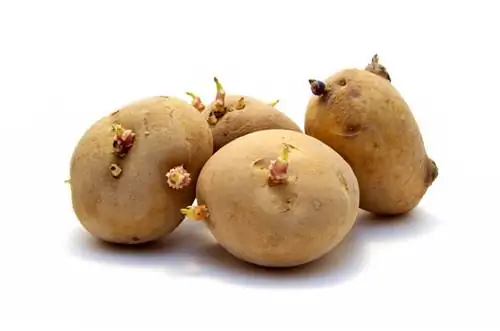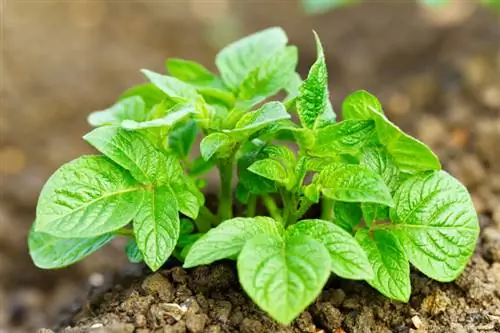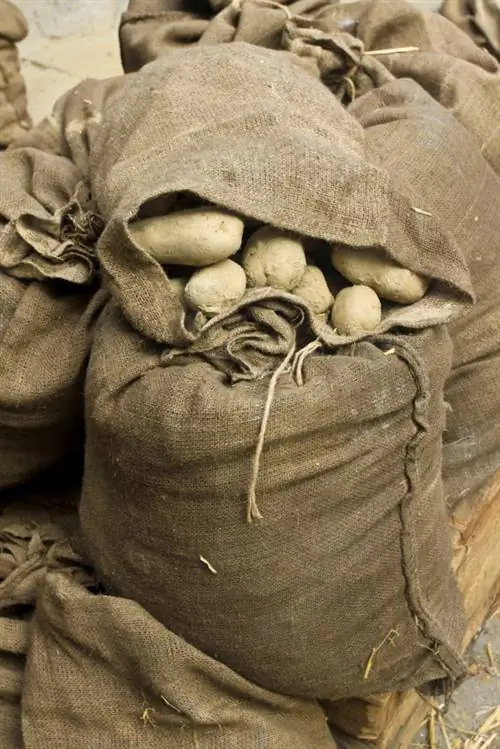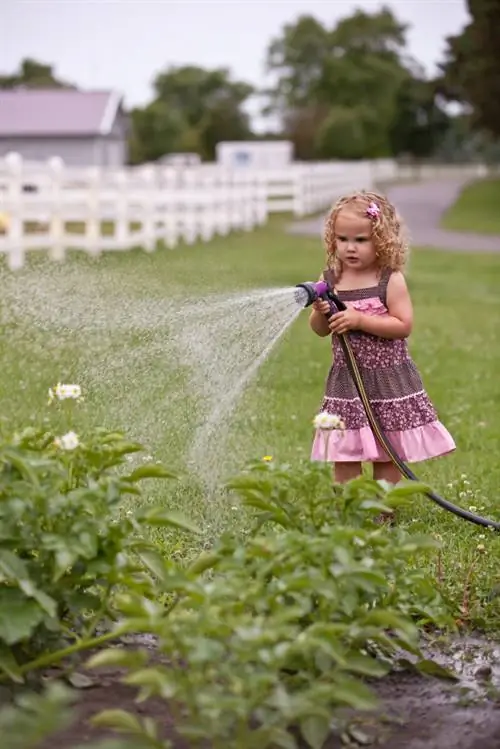- Author admin [email protected].
- Public 2023-12-16 16:46.
- Last modified 2025-01-23 11:19.
An important factor for the good growth of potatoes is pre-germination. While some people think that potatoes don't need to be pre-sprouted, others swear by it. What's the point of pre-germinating potatoes?

Why should you pre-sprout potatoes?
Pre-germinating potatoes increases yield, accelerates ripening time by about two weeks, provides protection against disease and promotes growth even in colder soils. Pre-germinated seed or table potatoes should be he althy, undamaged tubers.
Advantages
Advantage 1: Higher yields can be achieved with pre-germinated potatoes.
Advantage 2: Pre-germination makes the potato ready for harvest more quickly. After sowing, the potato can immediately push forward its shoots, which gives it a growth head start of about two weeks.
Pre-germinated tubers continue to sprout even in colder soil, while potatoes that have not been pre-germinated require warm soil to develop their germs.
Advantage 3: The growth advantage makes the tubers less susceptible to disease. Their shells harden more quickly, making it harder for invaders like wireworms and fungi. If late blight sets in, the tubers are more robust and some are already ready to harvest.
Which potatoes are suitable for pre-germinating?
- Seed potatoes from the trade
- Seed potatoes from last year's own harvest
- If table potatoes are to be used, then only use he althy, untreated tubers
- Seed potatoes must always be intact
Proper storage until pre-germination
Seed potatoes, even purchased ones, must be stored in a dark place so that they do not sprout prematurely. You should store seed potatoes from your own harvest in a dry, dark and cool place until early spring, ideally at temperatures between 4 and 8 degrees Celsius.
This is how pre-germination works
You start pulling forward about 4 weeks before sowing. You can grow early potatoes from February onwards, medium early and late varieties from March.
You lay out the potatoes next to each other in a fruit box and place them in a bright, dry place with temperatures of 10 to 14 degrees Celsius. The potatoes should develop firm shoots about 1 cm long, 4 to 6 are sufficient.
If you like, you can also fill the fruit box with potting soil and ripening compost. As an alternative to the fruit crate, you can use egg cartons.
Tips & Tricks
Not all potatoes develop germs when grown. You should sort these out before planting, as they will probably no longer sprout in cooler and dark soil.






